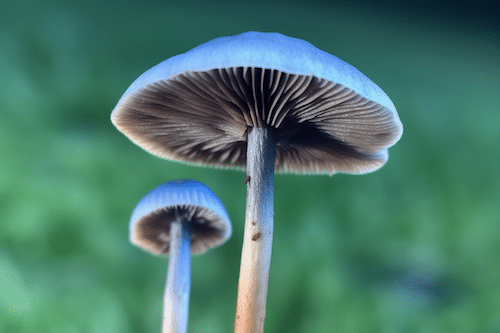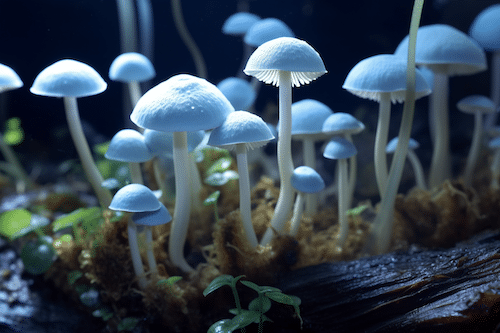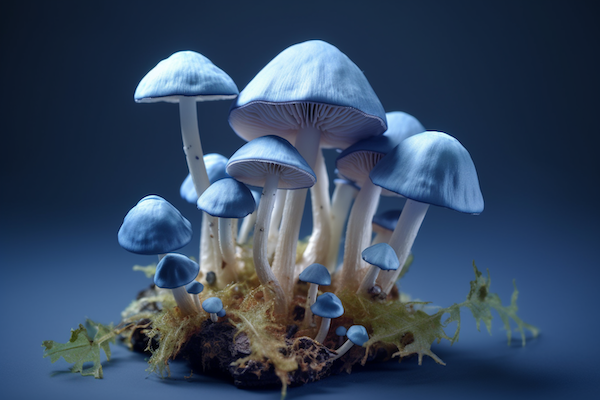How to Identify Panaeolus cyanescens

Panaeolus cyanescens (P. cyanescens) can be easily mistaken for other mushroom species, such as those belonging to the Panaeolus genus. For example, non-psychedelic mushrooms like Panaeolus antillarum were once mistaken for P. cyanescens. To accurately identify P. cyanescens, here are some key features:
Caps
The caps of P. cyanescens are 1.5 to 4 cm wide and have a convex (dome-shaped) appearance. Young caps are light brown, while mature caps are off-white or light gray, sometimes with yellow or brown tones. When damaged, the caps may turn blue or green, which explains the name “blue meanies.” The caps can also change color as the mushroom absorbs and loses water.
Gills
The gills of P. cyanescens have white edges. Initially gray in color, they turn black as the mushrooms mature. The spore print on the gills appears as irregular blotches, and the gills are broadly attached to the stem, known as adnate attachment.
Stipe/Stem
The stems of P. cyanescens are around 2-3 mm thick, 7-12 cm long, and enlarged at the base. They have the same color as the caps and also turn blue when bruised. The stems may have a frost-like white cover.
Edibility
P. cyanescens has a starchy odor and texture. However, it is important to note that ingesting mushrooms for identification purposes is not recommended, as consuming the wrong species can have fatal consequences.
Foraging Word of Warning
While foraging for magic mushrooms can be an enjoyable way to connect with nature, it is essential to exercise caution. Misidentifying mushrooms can be extremely dangerous. In the case of P. cyanescens, it can be easily mistaken for similar-looking species like Pholiotina rugosa, which contains deadly amatoxins, or Galerina marginata, which can also be fatal if ingested accidentally.
For this reason, if you are new to foraging, it is strongly recommended to go with experienced foragers and conduct thorough research on identifying your target mushroom.
If you are interested in acquiring Panaeolus cyanescens without the risks of foraging, consider growing your own mushrooms. Growing mushrooms is a much safer option, as mushroom kits can be used in any location and weather. Below, we have provided a section on how to grow P. cyanescens.



